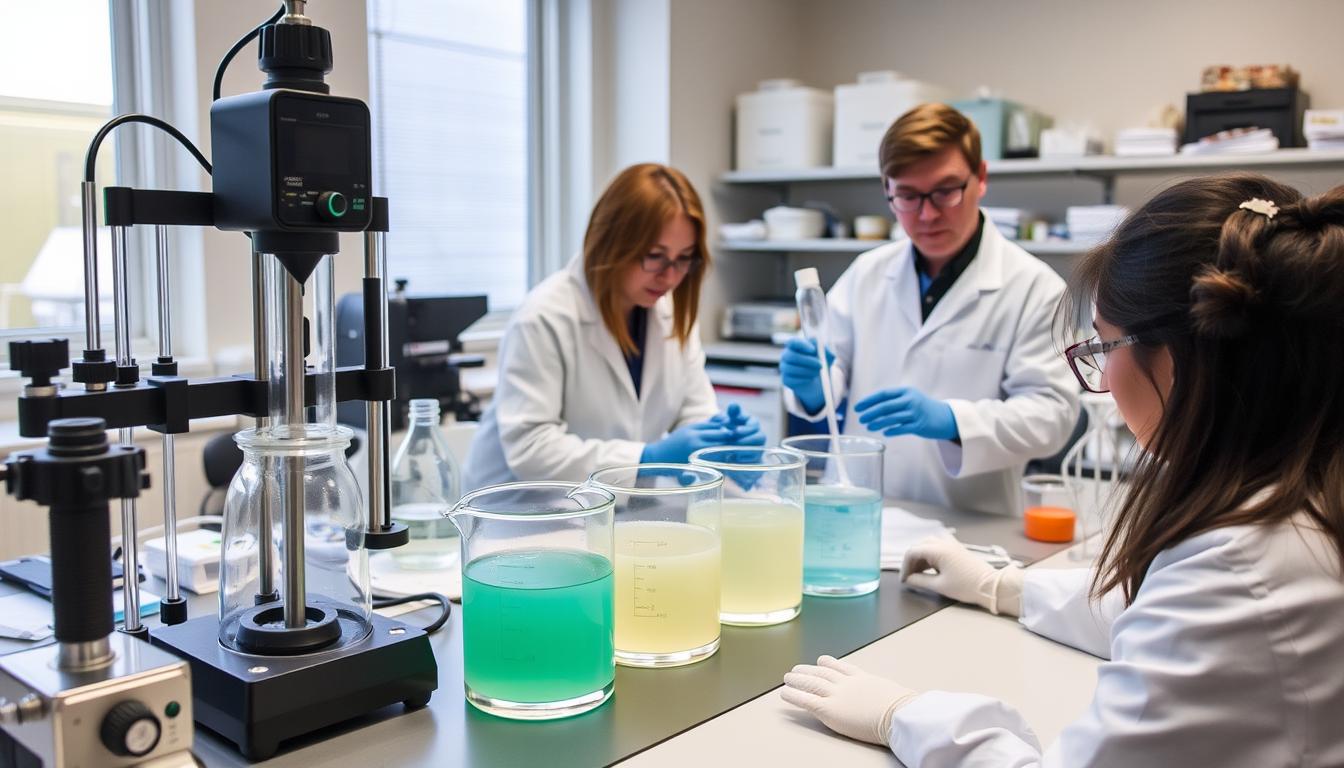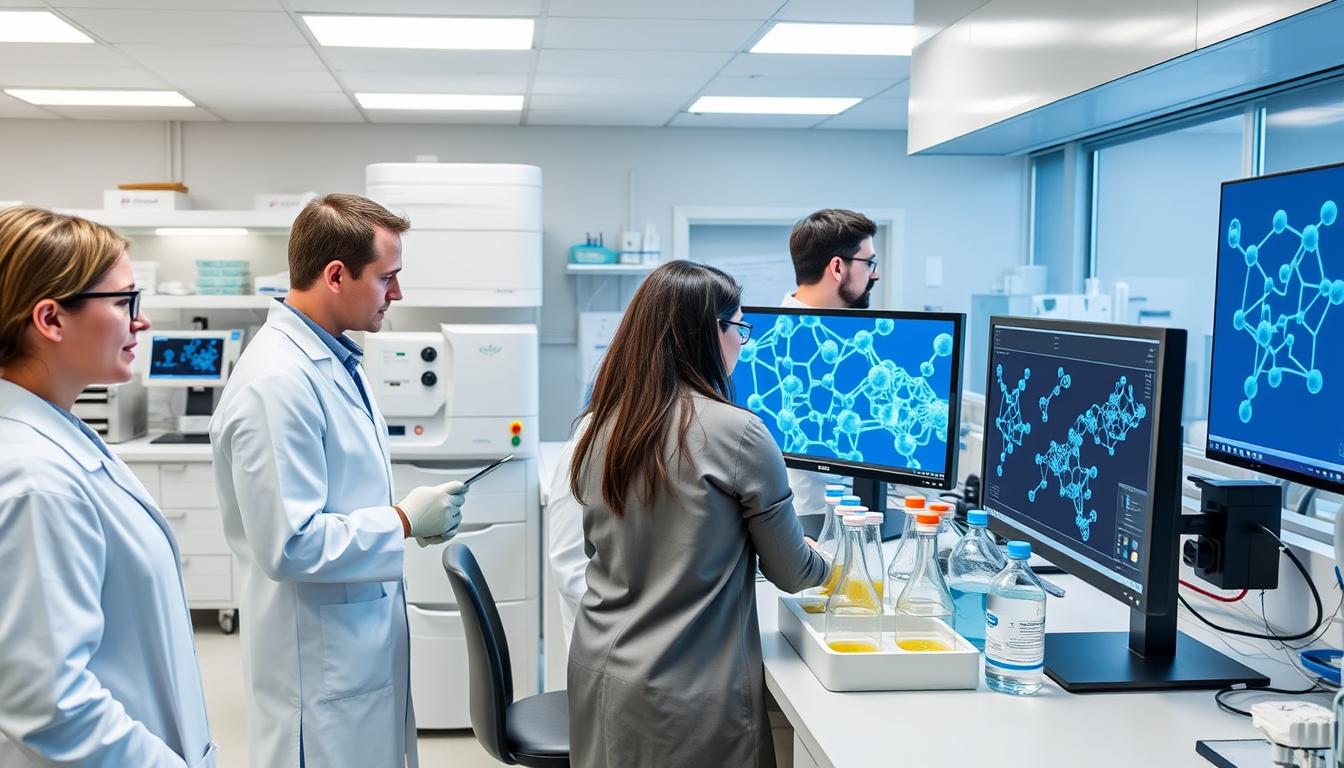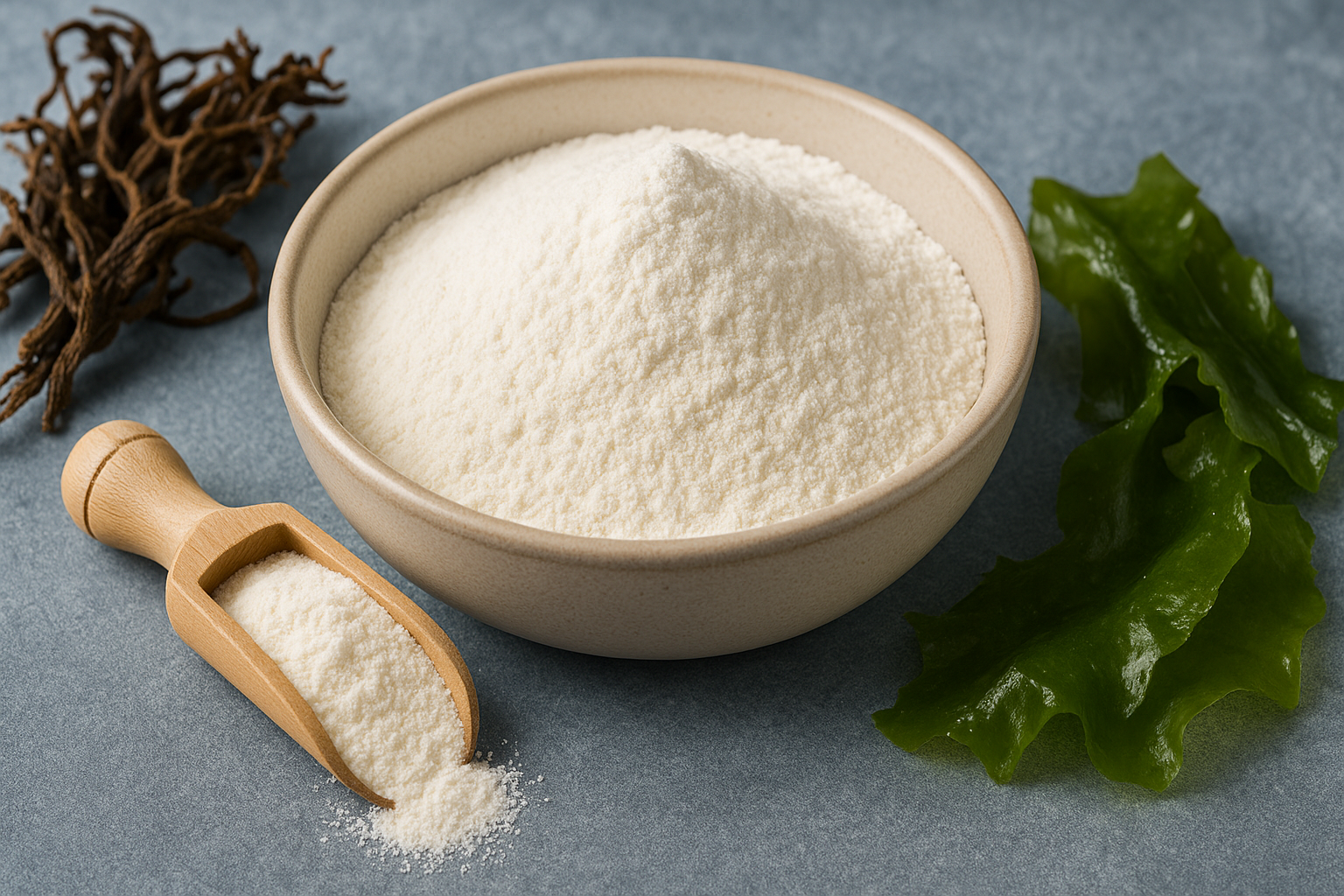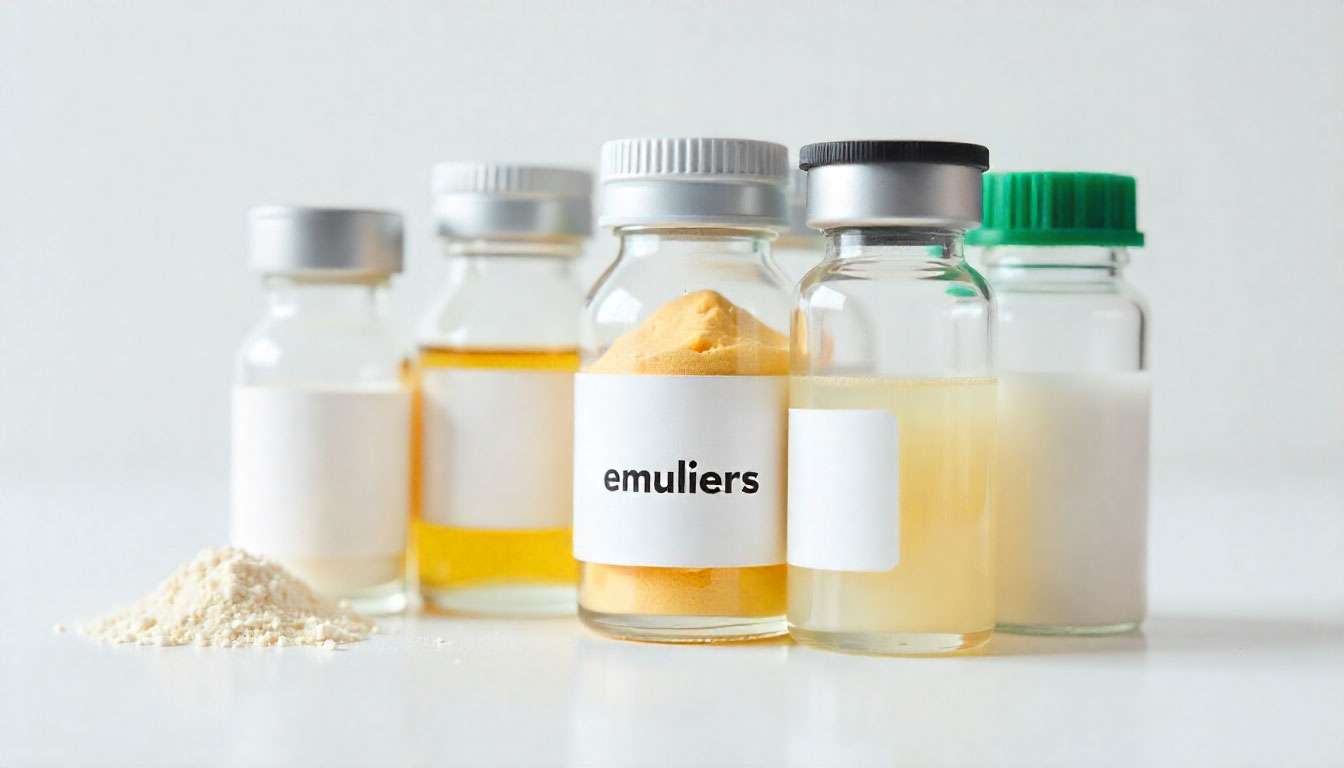
Lambda Carrageenan: Properties, Applications, and Benefits in Modern Formulations
SUBSCRIBE TO OUR BLOG
Promotions, new products, and recipes.
Lambda carrageenan stands out among hydrocolloids for its exceptional thickening properties without forming gels. As one of three main carrageenan types extracted from red seaweed, lambda carrageenan plays a crucial role in food, pharmaceutical, and cosmetic formulations. This comprehensive guide explores its unique characteristics, diverse applications, and advantages over other thickening agents.
What is Lambda Carrageenan?
Red seaweed harvesting: the natural source of lambda carrageenan
Lambda carrageenan (λ-carrageenan) is a sulfated polysaccharide extracted from specific species of red seaweed (Rhodophyceae). It belongs to the carrageenan family, which includes kappa and iota varieties. What distinguishes lambda carrageenan is its unique chemical structure and functional properties.
Unlike its counterparts, lambda carrageenan contains three sulfate groups per disaccharide repeating unit, giving it the highest sulfate content among carrageenans. This high level of sulfation prevents the formation of helical structures that typically lead to gelation in kappa and iota carrageenans.
The molecular structure of lambda carrageenan consists of alternating 3-linked β-D-galactopyranose and 4-linked α-D-galactopyranose units. Importantly, lambda carrageenan lacks the 3,6-anhydro bridge found in kappa and iota varieties, which further contributes to its non-gelling behavior.
Lambda Carrageenan vs. Other Carrageenan Types
Understanding the differences between lambda, kappa, and iota carrageenans is essential for selecting the right type for specific applications. Each variant offers distinct functional properties based on its chemical structure.
| Property | Lambda Carrageenan | Kappa Carrageenan | Iota Carrageenan |
| Sulfate Groups | Three per disaccharide | One per disaccharide | Two per disaccharide |
| Gel Formation | Non-gelling, thickening only | Strong, rigid gels | Soft, elastic gels |
| Cation Sensitivity | Limited (some response to trivalent ions) | Potassium ions (K+) | Calcium ions (Ca2+) |
| Solubility | Soluble in cold and hot water | Soluble in hot water | Soluble in hot water |
| Texture | Smooth, creamy viscosity | Firm, brittle texture | Elastic, cohesive texture |
| Syneresis | None (non-gelling) | High | Low |
| Primary Applications | Thickening sauces, dairy products, beverages | Gelled desserts, meat products | Dairy desserts, toothpaste |
Recent research has shown that lambda carrageenan can form gel-like structures in the presence of trivalent ions such as iron (III), expanding its potential applications beyond traditional thickening. This discovery opens new possibilities for lambda carrageenan in specialized formulations.
Unique Properties of Lambda Carrageenan

Lambda carrageenan powder demonstrating its thickening effect when added to solution
Chemical Structure and Functionality
Lambda carrageenan's distinctive properties stem from its unique molecular structure. With three sulfate groups per disaccharide unit, it carries a higher negative charge density than other carrageenans. This results in stronger electrostatic repulsion between chains, preventing the formation of double helices necessary for gelation.
Solubility Profile
Unlike kappa and iota carrageenans that require heating to dissolve completely, lambda carrageenan is soluble in both cold and hot water. This cold-water solubility makes it particularly valuable in applications where heating is undesirable or impractical.
Viscosity Characteristics
Lambda carrageenan creates highly viscous solutions without forming gels. Its viscosity is relatively stable across a wide temperature range and remains consistent during freeze-thaw cycles, making it ideal for frozen food applications.
Protein Interactions
Lambda carrageenan exhibits strong interactions with proteins, particularly milk proteins. This property makes it especially valuable in dairy applications where it can stabilize protein suspensions and prevent separation.
Applications of Lambda Carrageenan
Lambda carrageenan finds extensive use across multiple industries due to its unique thickening and stabilizing properties. Its non-gelling nature makes it particularly valuable in applications where increased viscosity without gelation is desired.
Food Industry Applications

- Dairy products (chocolate milk, yogurt drinks, ice cream)
- Salad dressings and sauces
- Fruit juices and beverages
- Syrups and toppings
- Plant-based milk alternatives
- Soups and gravies
Pharmaceutical Applications

- Oral suspensions and syrups
- Controlled-release drug delivery systems
- Tablet binders and disintegrants
- Topical formulations
- Wound dressings
- Antiviral formulations
Cosmetic Applications

- Lotions and creams
- Hair care products
- Toothpaste and oral care
- Facial masks
- Sunscreen formulations
- Makeup products
Case Study: Lambda Carrageenan in Dairy Alternatives

Plant-based milk alternatives stabilized with lambda carrageenan
Lambda carrageenan has become essential in the rapidly growing plant-based milk market. It addresses key challenges in these formulations by:
- Preventing separation of plant proteins and oils
- Creating a mouthfeel similar to dairy milk
- Maintaining stability during shelf life
- Improving heat stability for coffee applications
- Enhancing suspension of insoluble ingredients
- Providing consistent viscosity across temperature ranges
In a comparative study, plant milks formulated with lambda carrageenan showed superior stability and sensory properties compared to those using alternative stabilizers, particularly in applications requiring heat treatment.
Functional Benefits of Lambda Carrageenan

Laboratory testing of lambda carrageenan's thickening properties
Lambda carrageenan offers several distinct advantages over other hydrocolloids in various applications:
Advantages of Lambda Carrageenan
- Cold-water solubility eliminates heating requirements
- Creates smooth, creamy textures without gelation
- Excellent stability across wide pH ranges (3-10)
- Compatible with high salt concentrations
- Synergistic effects with other hydrocolloids
- Effective at very low concentrations (0.1-0.5%)
- Provides good suspension of insoluble particles
- Natural origin appeals to clean-label trends
Limitations to Consider
- Less effective at extremely low pH (<3)
- May require higher usage levels than some alternatives
- Cannot provide gel structure when needed
- Some consumer perception concerns
- Potential supply chain variability
- Higher cost compared to some alternatives
- Requires proper dispersion techniques
- Limited functionality in high-alcohol systems
Synergistic Effects with Other Hydrocolloids
Lambda carrageenan demonstrates valuable synergistic effects when combined with other hydrocolloids:
| Combination | Synergistic Effect | Applications |
| Lambda carrageenan + Xanthan gum | Enhanced suspension stability and improved mouthfeel | Salad dressings, sauces, dairy beverages |
| Lambda carrageenan + Locust bean gum | Increased viscosity at lower total gum concentration | Dairy products, ice cream, desserts |
| Lambda carrageenan + Guar gum | Improved freeze-thaw stability and texture | Frozen desserts, sauces, gravies |
| Lambda carrageenan + Pectin | Enhanced acid stability and texture | Fruit preparations, acidic beverages |
Safety Considerations for Lambda Carrageenan
The safety of carrageenan, including lambda carrageenan, has been extensively studied and reviewed by regulatory bodies worldwide. It's important to distinguish between food-grade carrageenan and degraded carrageenan (poligeenan), which are often confused in safety discussions.

Scientific safety testing of food-grade lambda carrageenan
Regulatory Status
Lambda carrageenan, along with other carrageenan types, has been evaluated and approved by major regulatory bodies:
- FDA (US Food and Drug Administration): Recognizes lambda carrageenan as Generally Recognized as Safe (GRAS) for food applications
- EFSA (European Food Safety Authority): Approved as food additive E407
- JECFA (Joint FAO/WHO Expert Committee on Food Additives): Established an Acceptable Daily Intake (ADI) of "not specified," indicating low safety concern
- Food Standards Australia New Zealand (FSANZ): Approved for use in various food categories
Addressing Common Concerns
Some studies have raised questions about carrageenan's effects on digestive health. However, it's important to note:
"There is no evidence of any adverse effects in humans from exposure to food-grade carrageenan, or that exposure to degraded carrageenan from use of food-grade carrageenan is occurring."
Most studies showing negative effects used degraded carrageenan (poligeenan) or extremely high concentrations not representative of typical food use. Food-grade lambda carrageenan undergoes strict quality control to ensure high molecular weight and minimal degradation.
Important distinction: Food-grade lambda carrageenan (E407) is different from degraded carrageenan (poligeenan), which is not approved for food use. Studies showing inflammatory effects typically used the latter or unrealistically high concentrations.
Practical Usage Guidelines for Lambda Carrageenan

Proper incorporation technique for lambda carrageenan in formulations
Recommended Usage Levels
Lambda carrageenan is highly effective at low concentrations. Typical usage levels vary by application:
| Application | Recommended Concentration | Function |
| Dairy beverages | 0.02-0.05% | Protein stabilization, mouthfeel |
| Plant-based milks | 0.03-0.08% | Suspension, mouthfeel |
| Sauces and dressings | 0.2-0.5% | Viscosity, emulsion stability |
| Pharmaceutical suspensions | 0.1-0.3% | Suspension stability |
| Cosmetic lotions | 0.2-0.4% | Texture, stability |
Preparation Techniques
For optimal performance, follow these guidelines when incorporating lambda carrageenan:
- Disperse lambda carrageenan in cold water before adding other ingredients
- Use high-shear mixing for complete hydration
- Allow sufficient hydration time (typically 15-30 minutes)
- For systems with high solids content, pre-blend carrageenan with other dry ingredients
- In dairy applications, add lambda carrageenan before heat treatment
Pro tip: Pre-blending lambda carrageenan with sugar or salt (at a ratio of 1:5) can improve dispersion and prevent clumping during hydration.
Future Trends and Innovations in Lambda Carrageenan

Research and development of novel lambda carrageenan applications
The lambda carrageenan market continues to evolve with several emerging trends and innovations:
Emerging Applications
- Microencapsulation: Lambda carrageenan is being explored for encapsulating sensitive ingredients like probiotics and flavors
- 3D Food Printing: Its unique rheological properties make it suitable for food printing applications
- Biomedical Materials: Research into wound dressings and tissue engineering scaffolds
- Sustainable Packaging: Development of biodegradable films and coatings
Sustainable Sourcing Initiatives
As demand for natural hydrocolloids grows, sustainable sourcing of seaweed has become increasingly important. Industry initiatives focus on:
- Seaweed farming certification programs
- Reduced environmental impact harvesting methods
- Community-based cultivation projects
- Traceability systems for raw material sourcing
Clean Label Formulations
With growing consumer demand for clean label products, manufacturers are developing:
- Minimally processed lambda carrageenan variants
- Organic-certified options
- Transparent supply chain documentation
- Educational initiatives on natural origin and processing
Conclusion: The Versatile Value of Lambda Carrageenan
Lambda carrageenan offers unique functional properties that make it an invaluable ingredient in numerous applications across food, pharmaceutical, and cosmetic industries. Its ability to thicken solutions without forming gels, cold-water solubility, and stability across various conditions provide formulators with versatile options for creating high-quality products.
While safety concerns have been raised, extensive scientific review by regulatory authorities worldwide supports the safety of food-grade lambda carrageenan when used as intended. By understanding its properties, applications, and proper usage techniques, manufacturers can effectively leverage lambda carrageenan's benefits in their formulations.
As research continues and new applications emerge, lambda carrageenan will likely play an increasingly important role in meeting consumer demands for natural, functional ingredients in a wide range of products.
Frequently Asked Questions About Lambda Carrageenan
What makes lambda carrageenan different from other carrageenan types?
Lambda carrageenan contains three sulfate groups per disaccharide unit (compared to one in kappa and two in iota), lacks the 3,6-anhydro bridge found in other carrageenans, and does not form gels under normal conditions. Instead, it functions primarily as a thickening agent and is soluble in both cold and hot water.
Is lambda carrageenan vegan and vegetarian-friendly?
Yes, lambda carrageenan is derived from red seaweed and contains no animal products or by-products, making it suitable for vegan and vegetarian formulations. It's commonly used as a plant-based alternative to gelatin in various applications.
How does lambda carrageenan interact with dairy proteins?
Lambda carrageenan interacts with dairy proteins, particularly casein, through electrostatic interactions between its negatively charged sulfate groups and positively charged regions on the protein. This interaction helps stabilize dairy emulsions, prevent separation, and improve texture in products like chocolate milk and yogurt drinks.
Can lambda carrageenan be used in acidic formulations?
Lambda carrageenan maintains functionality across a wide pH range (3-10), making it suitable for mildly acidic formulations. However, at extremely low pH levels (below 3), it may undergo hydrolysis during prolonged storage or heating. For highly acidic applications, it's often used in combination with acid-stable hydrocolloids like pectin.
What is the regulatory status of lambda carrageenan worldwide?
Lambda carrageenan is approved for food use in most countries worldwide. In the EU, it's designated as E407, while in the US, it's recognized as GRAS (Generally Recognized as Safe) by the FDA. The Joint FAO/WHO Expert Committee on Food Additives (JECFA) has assigned it an ADI (Acceptable Daily Intake) of "not specified," indicating low safety concern at typical usage levels.

|
About the Author Ed is the founder of Cape Crystal Brands, editor of the Beginner’s Guide to Hydrocolloids, and a passionate advocate for making food science accessible to all. Discover premium ingredients, expert resources, and free formulation tools at capecrystalbrands.com/tools. — Ed |
Enjoyed this post? Subscribe to The Crystal Scoop
Food-science tips, ingredient know-how, and recipes. No spam—unsubscribe anytime.
- Choosing a selection results in a full page refresh.



